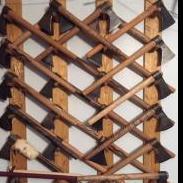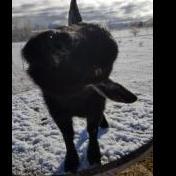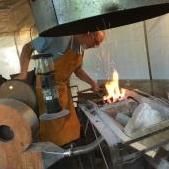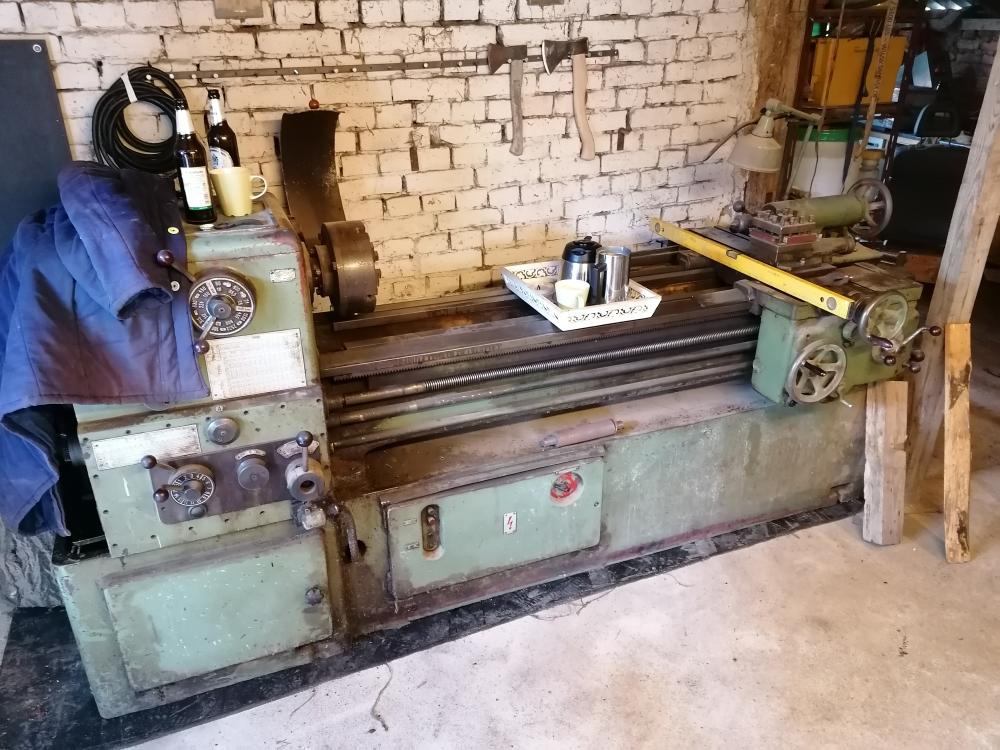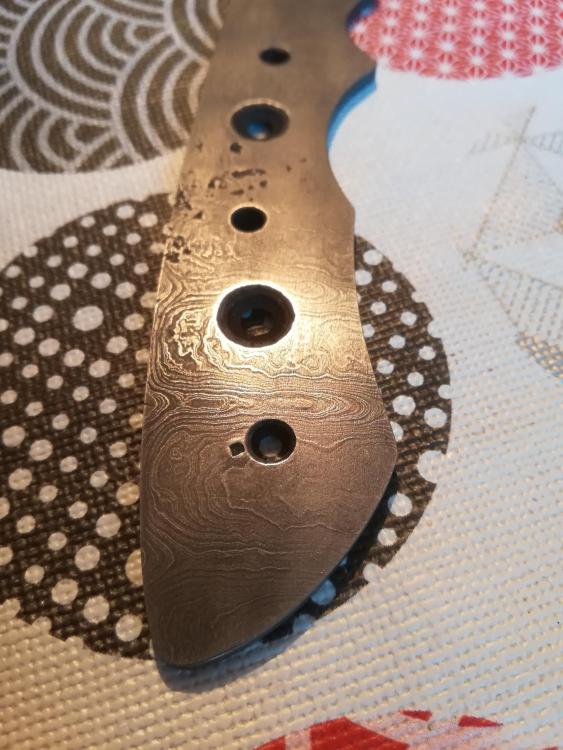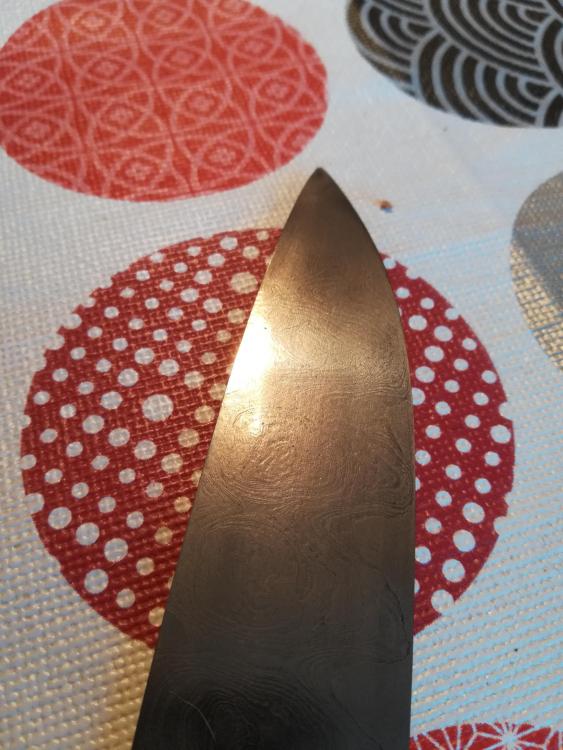-
Posts
69 -
Joined
-
Last visited
Profile Information
-
Gender
Male
-
Location
Thuringia, Germany
Recent Profile Visitors
2,740 profile views
-
My neighbors grandpa was a blacksmith. He had two lathes, this is the smaller one which actually found it's way to my shop. Else it's destination would have been the junk yard. Manufacturer was VVB Werkzeugmaschinen und Werkzeuge (WMW) in GDR back in 1968. Maximum size 1,6m (some 5 1/4 ft), swing 355mm (almost 14in). Still needs some love and care, especially the electrical installation. But it works
-
I'm definitely no "latin expert" too. I had the opportunity to gain the latin proficiency certificate (is that the correct term?), but that was ages ago So this is just my point of view. And honestly: There's no one among us who ever met an ancient roman. That's why in my eyes everything is just a guesstimate, even the spelling
-
I think there's a little Mischinfektion of the structure of the sentence in your translation Your translation means "See with awe, o mortals. The semi-god is working." I think the original sentence means something like (just in a different order) " O mortals, respectfully se the semi-god at work." You're of course right, the plural imperative of videre (to see) is videte. Contrary to you in my eyes the word reverente does not origin from the noun reverentia but from the adjetctive reverens. So in the casus ablativus reverens turns to reverenti. That would mean the orginal sentence is not that wrong. It should just be "Reverenti videte, o mortales, herorem loborare. "
-
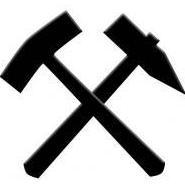
Getting the kids involved
c.baum replied to HammerHeart's topic in Blacksmithing, General Discussion
I hope no one minds me starting this argument, but... Everyone is talking about safety. I'm absolutely fine with that since i'm a health and security officer. But it seems to me that a simple safety goggle is the ultimate solution. Don't get me wrong, it's recommended to wear such a goggle at work. But I've seen lot of blacksmiths on YT and on pics in forums insisting on safety and wearing these goggles, but no one for example permanently uses ear protection. It's scientifically proven that hitting steel with a hammer on an anvil produces a frequency spectrum one can't hear (resulting in no "real" noise) but that's damaging your sense of hearing permanently. In most cases these blacksmiths only use ear protection when working with tools that are obviously loud. But no one seems to wear ear protection all the time when forging. And additionally I've seen a lot of people using these standard safety googles when using an angle grinder or belt grinder. In Germany that's not permitted 'cause one has to wear tight-fitting protective goggles. So, is that just an appearance due to my perspective? Again, please don't get me wrong! I just want to learn more about your opinion and how the US deals with safety at work (in fact in Germany we always hear that the USA have a much more strict safety system than us). I'm excited for your answers and hope for a fair discussion! P.S.: If there's something not expressed correctly, forgive me. It's hard to find the right words and terms as a foreign speaker. It's not my intention to offend someone! -
I'm forging lot of tools out of 4140 (1.7225), never had any problems. quite the contrary 4140 is a steel that forgives some mistreatment. quenchend it in oil and water without any cracks. Maybe too hot (max. light red, better cherry red, do not overheat and wait till it's red!). annealed before?
-
Steve Sells, don't get me wrong, I'm sure you know what you're talking about. But that's not an explanation for that, the unhardened handle shows a pattern and the hardened Blade doesn't. I can't imagine that all the welding heats didn't effect an migration of carbon and the one short hardening heat does. I hope you can imagine what my thoughts are.
-
Steve Sells, Thats not correct. Our ancestors used only carbon based steels to make pattern welded steels since the late 8th century. And as you can see on my handle there is a well defined pattern possible. The equalization of the carbon depends among other things on the number of welding heats. And it does at every steel, not only the pure carbon steels.
-
Thanks for your opinion Steve. I made several experiences with that. Your absolutely right. I'm sorry, i forgot to mention, that the knife has not been hardened completely. I'll attach some pictures to give you an impression. As you might see, the unhardened handle area has a really nice pattern, the hardened blade area hasn't.
-
Hi Folks, I've got a little problem. I made a pattern welded steel of 1045 and an old file. So there are no other alloys worth mentioning in it (except of carbon of course). It's the first try and the package welded perfectly. The first etch in ferric chloride for 10 min showed a nice pattern. But after heat treating there's just a glimpse of a pattern after 1 hour of etching. As far as my experience goes (but with high alloy steel) the pattern becomes more intensive after hardening. Anyone with some more experience in pattern welded steels out of "pure carbon steel"? I just don't want to ruin the blade by etching it too long.
-
sometimes it's quite easier than you can think i thought "bite switch" is an operational mode ... now i know it's just a switch you use by biting on it. Thanks!!! EDIT: can you make some more videos of it? i love how the hot steel looks like some kind of candy being chewed. It looks so delicious and hypnotizing ...
-
I'm really sorry to ask such a simple question ... but ... what does "bite switch" mean?
-
I never imagined such a high activity in this thread. Many thanks again! I hope you don't mind that it took a while for me to answer, i've been on a business trip. I don't think that a combined knife with a "saw back" is a good idea. I think that saw back will damage too much venison when handled too careless. That's my intention. That's too long. Maybe you should ask the search engine of your choice for pics about "Aufbrechsäge". I hope that helps you to understand what i mean. What an interesting link! Not for cutting bones, but maybe there will be a wood saw following.
-
Thank you all for sharing your thoughts with me!! now i know what you mean! sounds logic to me. I do not know the correct term in English, but when you killed the animal you cut open the gut to remove the entrails to cool the body down as fast as possible. to do so you also cut open the pelvis. sometimes you need a saw for that. There are solutions to purchase, but my intention was to make a foldable saw.
-
Many thanks for your interesting answers! Will W. I think spring steel will be a good choice. High flexibility is a good point, but i think the saw blade won't be longer than 3 or 4 inches. you're sure? the butchers saw i found looks like cutting on the push...
-
Dear community, i used the search function of IFI and google, but most of the threads are about what to make out of an old saw blade or which steel they are made of. If this is not the right section for this thread please feel free to move it where it belongs. A good friend actually made his hunting exam and i thought it would be a nice gift making a "knife and saw kit" for field dressing. Anyone with experience in making a saw? Which shape should the teeth have for cutting bone? Are there measurements to pay attention to? Hope you can help me! P.S: I'm definitely able to google for a butcher saw and try to copy it. But want to UNDERSTAND how it works and how it's made

